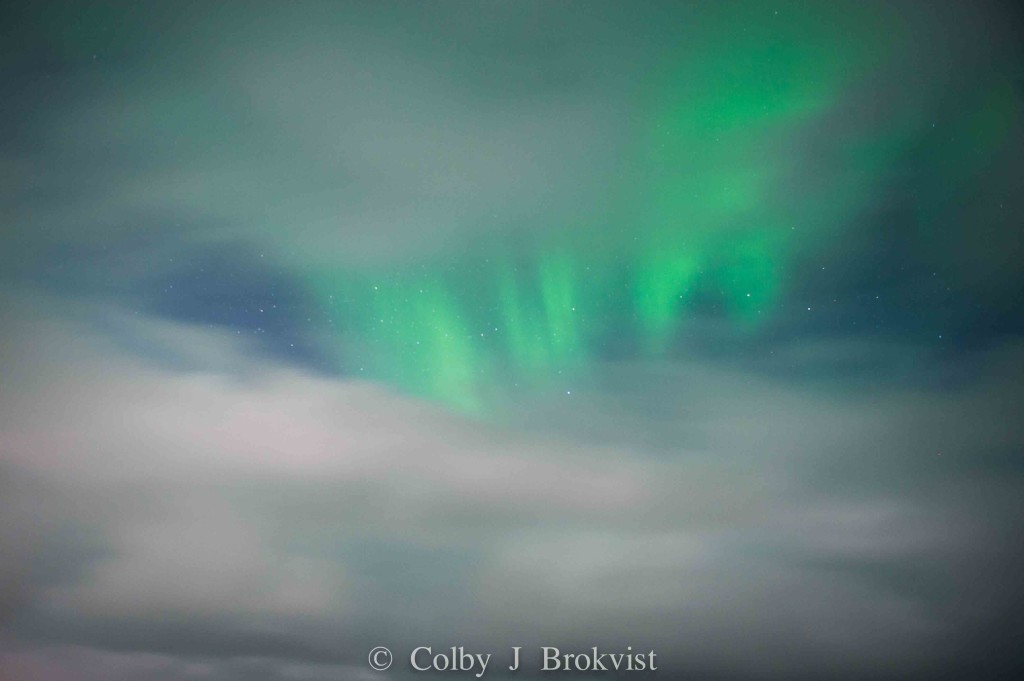As northern lights season for Natural Habitat Adventures gets underway in Churchill, this seems like the perfect time to break out some of the best photos and videos of aurora borealis. Enjoy these images from Churchill!

Aurora in the night sky at the Tundra Lodge. Colby Brokvist photo.
Charged particles projected from the sun’s surface collide with gaseous particles in the earth’s atmosphere and develop into what we know as Aurora borealis. Color Variations result from the various types of gas particles colliding. Most commonly occurring colors are a pale yellowish-green. These hues are produced by oxygen molecules located nearly 60 miles above the earth. High-altitude oxygen, up to 200 miles above the earth’s surface, produce rare all-red auroras. Blue or purplish-red aurora are produced by Nitrogen particles colliding with particles from the sun.
Because the temperature above the sun’s surface is millions of degrees Celsius, explosive collisions between gas molecules constantly occur. As the sun rotates, free protons and electrons are ejected through the surrounding atmosphere. Solar winds feeding off the rotation blow towards Earth and these charged particles are deflected by the earth’s magnetic field. Since the earth’s atmosphere is weaker at the poles, particles enter and then collide with gas particles. Dancing lights are produced and have captivated our imaginations for centuries!
Travel north this winter and see the amazing northern lights in Churchill.

